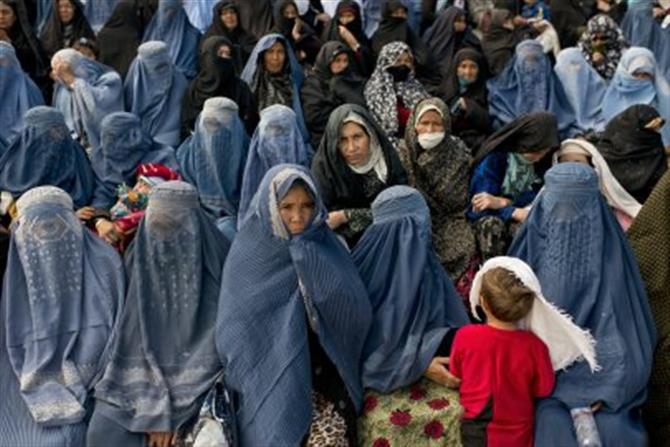Khaled Ahmed*
The US-Taliban talks have bogged down because the latter is not willing to negotiate with the Ashraf Ghani government in Kabul. Washington is keen to leave Afghanistan and save the $45 billion it spends there annually but is troubled over what the Taliban will do to Afghanistan after it leaves. The Taliban has refused to talk to the US-supported Ghani government because they already control half of Afghanistan and fear internal splits if they play ball and negotiate.
Pakistan had tried to manipulate the Taliban over policy and suffered damage at the hands of the Pakistani Taliban. It fears the return of the Taliban government after the Americans leave and wants to keep its options open. Pakistani Taliban, operating from inside Afghanistan, will be strengthened after the Americans leave; and the Ghani government is unable to control the situation. There was a time when Pakistan was hosting around four million Afghan refugees, most of whom returned home in 2002 leaving 1.3 million “registered” ones still stuck in Pakistan while the “unregistered” ones remain outside this count. Khyber-Pakhtunkhwa province has 81 per cent of them, Punjab 10 per cent, Balochistan seven per cent and Sindh one per cent.
The Taliban simply don’t want modern education and prefer the madrassa that they see as the future inspiration of Afghanistan. They destroy schools wherever they see them: The number of attacks on schools tripled, according to UNICEF, rising from 68 in 2017 to 192 in 2018. The war has closed down 1,000 schools, depriving some 5,00,000 children of their right to learning.
What is the plight of these “registered” Afghan refugees? According to a recently published report, “nearly half this number is believed to be children under the age of 14, with another 20 per cent reportedly between 15 and 24 years old”. In 2015, the United Nations High Commissioner for Refugees had reported that “a staggering 80 per cent of Afghan children in Pakistan were out of school”. Add to this number, the “44 per cent of all children in Pakistan that don’t receive any education”. Pakistan’s future will be decided by these children who are destined to come of age without any education. Add to this number the Afghan children who will grow up not feeling a part of Pakistan.
An article by Mahwish Qayyum in Newsweek Pakistan has lifted the curtain slightly on what is in store. She reports that one Saeed Agha, a refugee himself, had established a low-cost school consisting of six rooms and one bathroom at an informal settlement in Islamabad’s I-12 sector with a donation of Rs 1,70,000. (This Islamabad sector has 3,424 refugees, including 2,136 children.) The primary school had enrolled 400 local children, but it was forced to shut down after three months because Agha could not come up with more money.

Afghanistan women clad in Burqa
What will over a million Afghan refugees do in Pakistan? First, there is the prospect of a couple of million more refugees coming to Pakistan if there is no solution to the crisis in Afghanistan where America is not winning and is keen to leave; and the Taliban controls half of the country. The Taliban doesn’t like modern “un-Islamic” education and is opposed to girls getting any education at all. Even today it is able to target and kill “progressive” women who venture out of their homes to take up jobs to sustain their starving, often “fatherless”, families. Pakistani Taliban, aligned with Uzbek warriors and sworn to the same “piety” as the Afghan Taliban, had destroyed all girls’ schools in the valley of Swat in 2012 and shot Pakistan’s Nobel Laureate Malala Yusufzai in the head because she wouldn’t stop going to school.
The mood is no different in Afghanistan. The Taliban simply don’t want modern education and prefer the madrassa that they see as the future inspiration of Afghanistan. They destroy schools wherever they see them: The number of attacks on schools tripled, according to UNICEF, rising from 68 in 2017 to 192 in 2018. The war has closed down 1,000 schools, depriving some 5,00,000 children of their right to learning. Pakistan has its own 32,000 madrassas doing far better than the state-run schools where conditions are hostile to learning because of ramshackle buildings and savagely illiterate teachers.
Afghanistan, like Somalia, is hardly a “centralised” state. Kabul didn’t ever control most of the territory where Uzbek and Tajik warlords ruled with or without the government’s consent. Pakistan, unfortunately, didn’t learn from the chaos of Afghanistan and kept itself “uncentralised” without proper writ of the state in almost 60 per cent of its territory, somewhat in imitation of Afghanistan. The Tribal Areas in the north and northwest, almost the whole of Balochistan and interior Sindh — with some Sindhi feudal influence rubbing off on South Punjab — remained without proper policing. The next post-US withdrawal war in Afghanistan is bound to send more refugees into Pakistan that is now fencing the 1,640 mile-long Durand Line border, which the Taliban doesn’t recognise. It has 235 “crossing points”, where infiltration goes on.
Ideology and a collapsing economy don’t let Pakistan look after its children the way it should. What a child needs growing up anywhere is good education. Pakistan has neither the money nor the thinking to provide it. In fact, due to its ideological orientation, even if it succeeds in providing education to its children, it is going to be close to what the madrassas are already doing free of cost.
The writer is consulting editor, Newsweek Pakistan